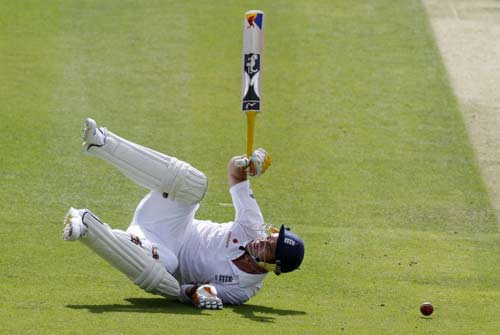Tourists' speed kings dethroned by failure to seize early initiative

Your support helps us to tell the story
From reproductive rights to climate change to Big Tech, The Independent is on the ground when the story is developing. Whether it's investigating the financials of Elon Musk's pro-Trump PAC or producing our latest documentary, 'The A Word', which shines a light on the American women fighting for reproductive rights, we know how important it is to parse out the facts from the messaging.
At such a critical moment in US history, we need reporters on the ground. Your donation allows us to keep sending journalists to speak to both sides of the story.
The Independent is trusted by Americans across the entire political spectrum. And unlike many other quality news outlets, we choose not to lock Americans out of our reporting and analysis with paywalls. We believe quality journalism should be available to everyone, paid for by those who can afford it.
Your support makes all the difference.For much of yesterday's play the four horsemen of the apocalypse turned out to be riding geldings, castrated by the Plasticine pitch.
South Africa's much-vaunted pace attack did manage to strike Kevin Pietersen on the bonce but their former compatriot recovered to despatch the quartet of quicks to all parts. Alastair Cook was also surprised, and dismissed, by a sharp lifter, but otherwise the visitors were as scary as the ghosts in Scooby-Doo.
There were extenuating circumstances and it would be unwise to write the Proteas' pacemen off with drier, faster wickets – notably at The Oval – to come, but yesterday the hype was just that. The morning began with Dale Steyn tearing in off 38 paces to a ring of four slips, a gully and a man on the hook. From the Pavilion End Makhaya Ntini had five slips and a gully. But as Paul Collingwood said prior to the match, "when the ball is coming on to the bat a lot quicker, and there are more attacking fields, we see it as there being more opportunities to score." It took England 20 balls to get off the mark but thereafter runs flowed at a rate which, if not up to the standard set by the Australians in recent years, was very respectable for a team which had been put into bat.
By the time the shadows were lengthening, and Steyn and Ntini were delivering the new ball to two slips and a gully, Graeme Smith must have wished he had lost the toss. Michael Vaughan said he would have also bowled, but he could have expected Ryan Sidebottom and Jimmy Anderson to make better use of the early conditions. They may not be as quick, but they can make the ball do more tricks.
Not that any of the South Africans reached 90mph often. The giant screen soon gave up flashing delivery speeds as a steady flow of balls in the mid-80s was the going rate. Still nippy, but not quick enough to challenge a serious Test batsman.
In Pictures: Day one at the Test
The tourists were understandably rusty. Between them the four had bowled 88 overs since arriving in England. Morne Morkel and Steyn were also new to Lord's with its notorious slope. Yet they bowled neither short enough to rough up the batsmen, nor full enough to use the overcast conditions of the morning. Nor did they bowl straight enough. Morkel's first ball suggested the pre-match comparison with Steve Harmison was accurate; it went for four legside byes. In the opening hour only three balls would have hit the stumps. The first leg before appeal arrived after an hour-and-a-half. That was from Ntini, bowling to Cook. Aside from the fact it pitched outside leg and struck the bat first, it was a good shout. Such witticisms were lost on Andrew Strauss an hour later, when he was given out playing across a ball which also pitched outside leg.
That wicket presaged the brief spell when South Africa were on top. Steyn took advantage of Vaughan's poor early footwork and Morkel, consistently the quickest, but also the most wayward, of the South Africans, surprised Cook.
Ian Bell, with an early flurry of shots, and Pietersen, initially circumspect, then dismissive, extinguished South African hopes of building on their breakthrough. Even the arrival of the second new ball barely troubled the pair. Pietersen moved smoothly on to a hundred he understandably exulted at. Bell, who had gone into his shell in the 40s, again unfurled an impressive array of strokes. By the close the fearsome four, Jacques Kallis included, were very tired, and unlikely to be looking forward to resuming today.
Join our commenting forum
Join thought-provoking conversations, follow other Independent readers and see their replies
Comments